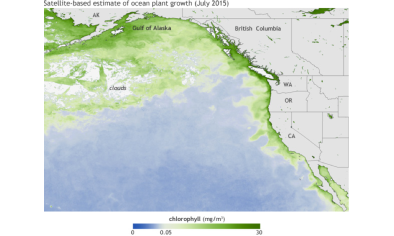The Demise of the Warm Blob

As unusually warm surface water sloshed around for months, the grim consequences began to ricochet through the marine food web. Microscopic phytoplankton thrive in cool waters, so the lack of upwelling water meant surface waters became increasingly starved of nutrients. With fewer phytoplankton, fish and other marine life began to suffer. Certain types of fish started avoiding the region altogether, and by 2015 record numbers of starving sea lions and fur seals were found stranded on California’s beaches. Meanwhile, the warm water also began to produce some strange weather in the western United States.
Thanks in part to the strong El Niño in the equatorial Pacific, the Blob has finally broken up. Beginning in November 2015, strong winds blowing south from Alaska began to pick up, and sea surface temperatures in the northeastern Pacific began to cool
Related Content





